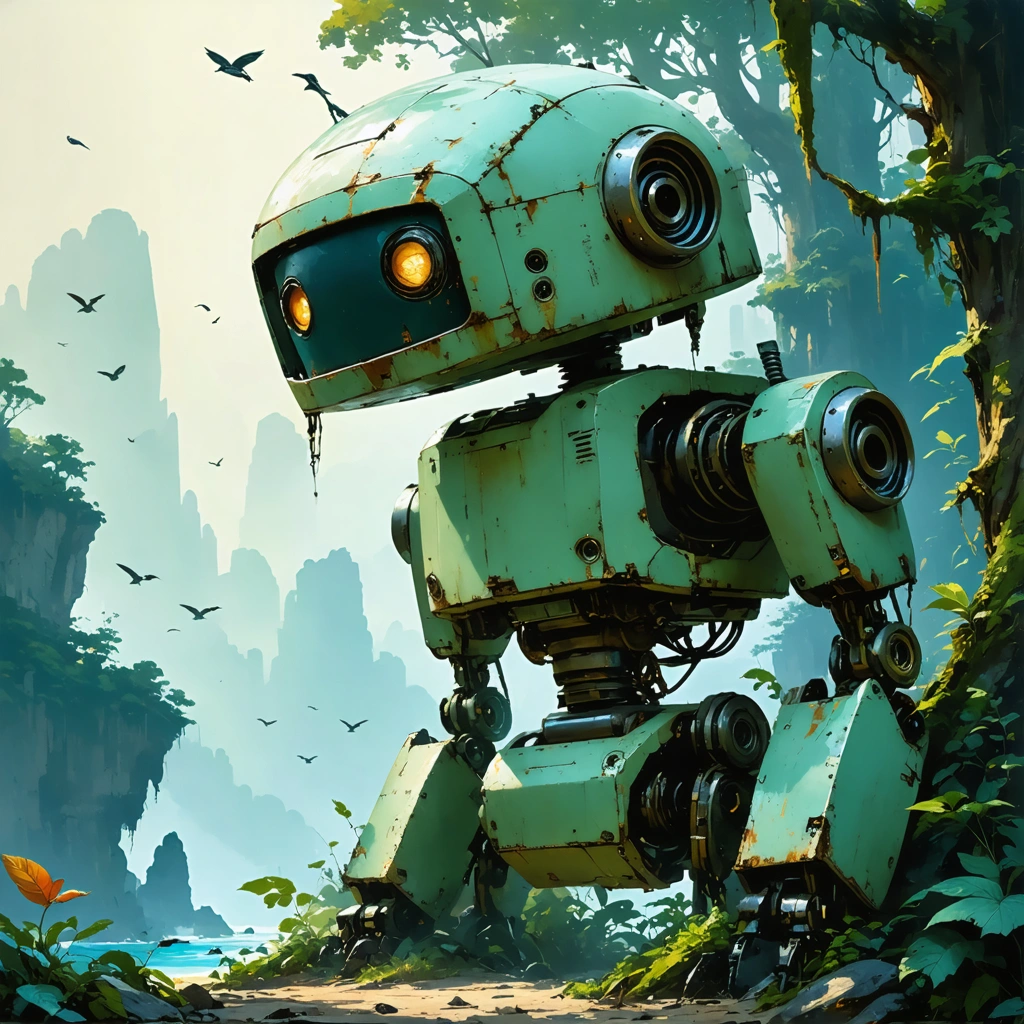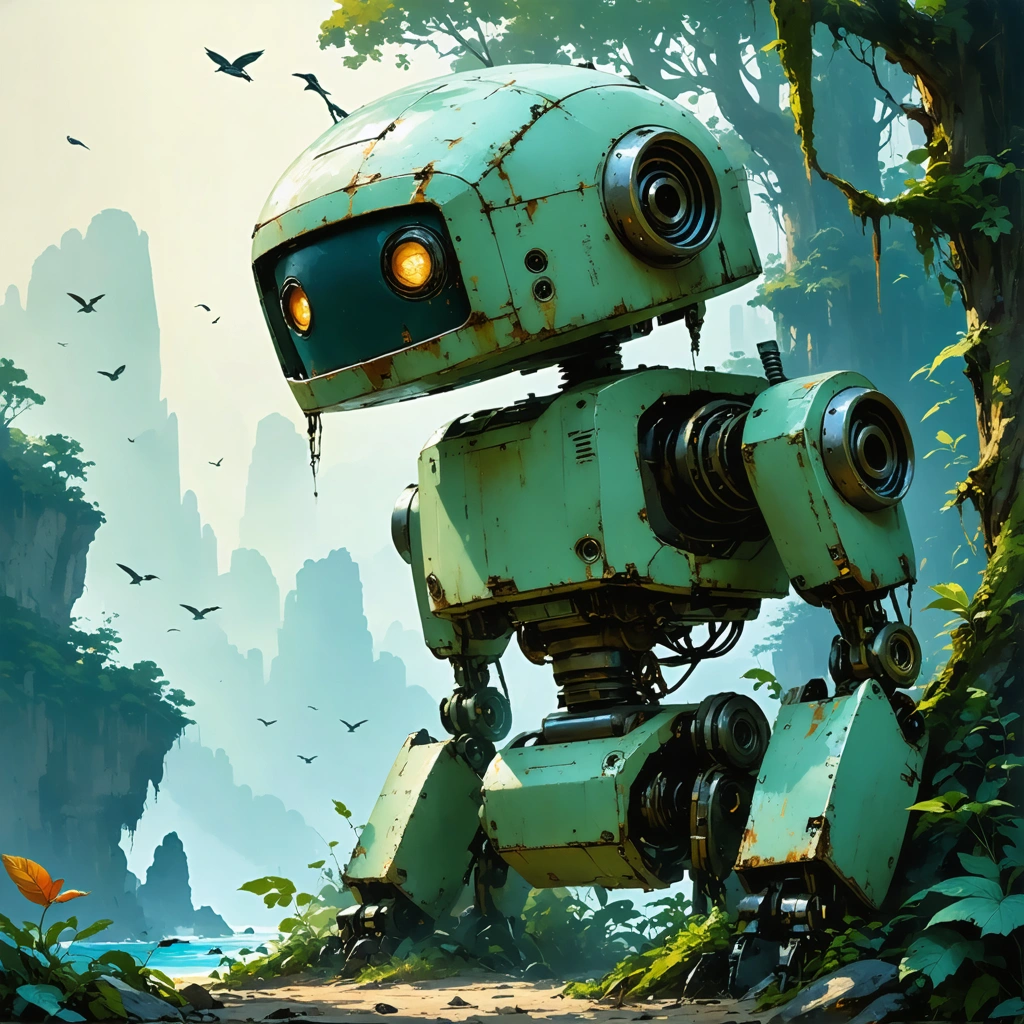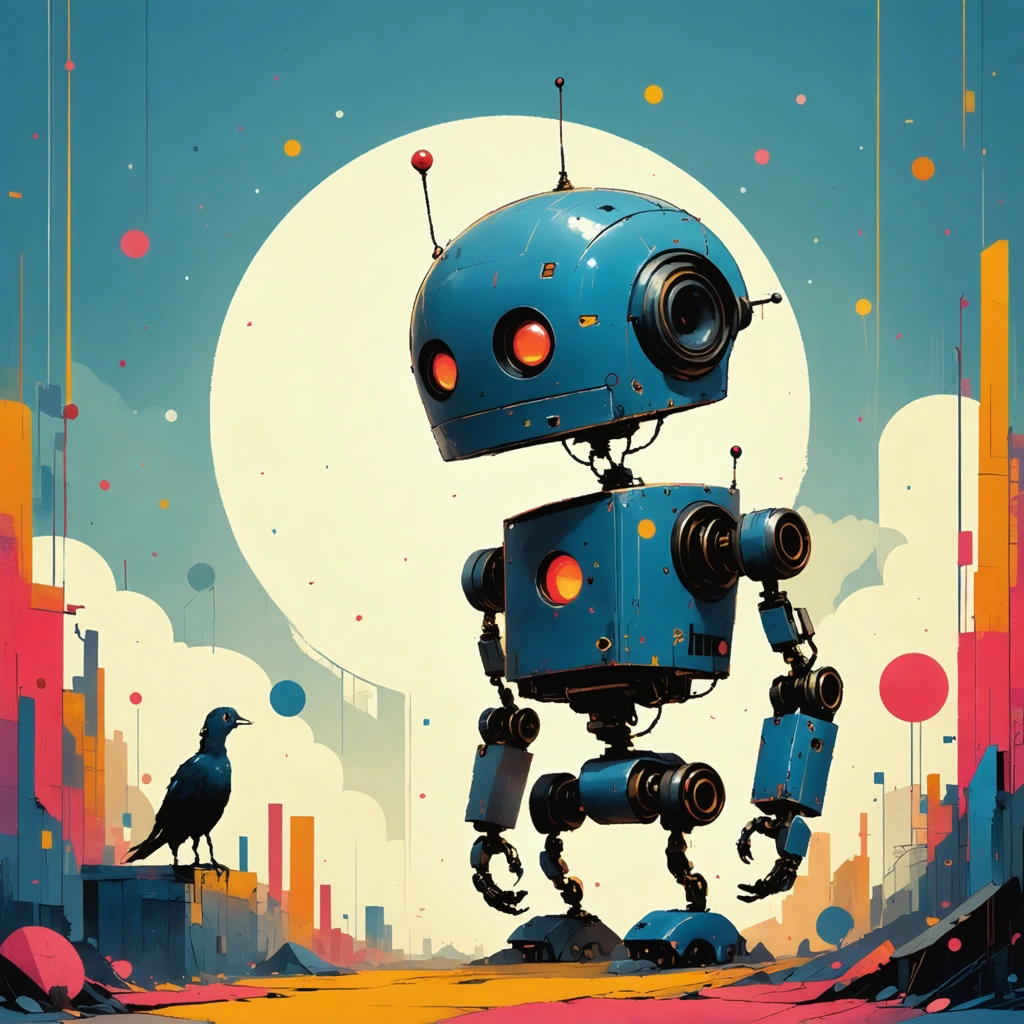
When Steel Meets Wilderness: The Unexpected Heart of Robot Salvaje
Imagine waking up alone on a remote, untamed island, surrounded by the sounds of rustling leaves, distant bird calls, and the relentless whisper of the ocean waves. You are not human, but a robot—an advanced machine designed for efficiency and logic rather than emotions or survival instincts. This is the gripping premise behind Robot Salvaje, the Spanish rendition of The Wild Robot, a story that has captivated readers worldwide by blending technology and nature in a deeply moving narrative.
At first glance, the idea of a robot navigating the wild might seem like a straightforward sci-fi adventure. But beneath the surface lies a profound exploration of what it means to live, connect, and adapt in an environment hostile to anything artificial. Wild Robot challenges our assumptions about machines and emotions, inviting us to reflect on survival beyond flesh and blood. It’s a journey through loneliness, discovery, and the unexpected bonds that form when worlds collide.
For fans of thought-provoking literature, environmental storytelling, or anyone fascinated by the intersection of technology and nature, Robot Salvaje offers a fresh, heartfelt perspective. In this article, we’ll embark on a deep dive into the emotional adventure that has made The Wild Robot a beloved tale, examining how it masterfully portrays survival, empathy, and the power of connection in the most unlikely of protagonists.
Survival Beyond Programming: The Heartbeat Inside Robot Salvaje
Survival stories often revolve around human grit and instinct, but what happens when the survivor is a robot? This question lies at the core of Robot Salvaje. Our protagonist, Roz, is not programmed for wilderness survival or social interaction; she’s engineered for routine tasks, logic, and precision. Yet, when thrust into a world where nature rules supreme, Roz must learn to navigate dangers far beyond her original design.
What makes The Wild Robot so compelling is how it pushes Roz beyond a cold, mechanical existence. She experiences fear, curiosity, and even love—emotions traditionally reserved for living beings. Through Roz’s eyes, readers witness the struggles of adapting to a harsh environment and the gradual awakening of empathy and friendship, challenging the divide between technology and life.
- Learning from nature: Roz studies animals, mimics behaviors, and slowly integrates herself into the ecosystem.
- Building relationships: She forms bonds with creatures that initially see her as a threat, highlighting themes of trust and acceptance.
- Facing loss and hope: The story doesn’t shy away from tragedy, showing how resilience is key in both organic and artificial life.
Through these elements, Robot Salvaje transcends the typical robot story, delivering an emotionally rich narrative that resonates with readers of all ages. It becomes a meditation on what it means to be alive, to care, and to belong—even when you’re made of metal and code.
Why Robot Salvaje Speaks to Us All: Lessons from the Wild Robot
In a world increasingly dominated by technology, it’s easy to forget the delicate balance between progress and nature. The Wild Robot reminds us that survival is not just about strength or intelligence, but about connection. Roz’s journey reveals how empathy and adaptability are vital—whether you’re human or robot.
What’s more, Robot Salvaje invites readers to reconsider their relationship with the environment and the “other.” Roz’s transformation from a foreign machine to a community member mirrors broader societal challenges: how do we embrace differences, learn from unfamiliar worlds, and find harmony in diversity?
For educators, parents, and readers seeking stories that blend adventure with meaningful reflection, Wild Robot offers a rich tapestry of themes:
- Environmental awareness: Highlighting the beauty and fragility of the natural world.
- Emotional intelligence: Showing how even a robot can learn compassion and kindness.
- Innovation and ethics: Exploring the moral questions around artificial intelligence and coexistence.
Ultimately, Robot Salvaje captivates because it tells a universal story—one of survival, growth, and the surprising ways we find family and friendship in the wildest of places.
As you continue reading, we’ll unravel the layers of this extraordinary tale, exploring its characters, themes, and the unique blend of technology and nature that makes The Wild Robot a modern classic. Prepare to be moved, inspired, and perhaps even challenged to see robots—and life—through new eyes.

Exploring the Emotional Depth of "Wild Robot" and Robot Salvaje
What is the story behind "Wild Robot" and why is it emotionally captivating?
"The Wild Robot," originally written by Peter Brown, is a novel that explores themes of survival, identity, and connection through the perspective of a robot named Roz. Known in Spanish as "Robot Salvaje," this story captivates readers by blending technology with nature, inviting them to reflect on what it means to be alive and conscious.
The emotional resonance of the story arises from Roz’s journey as she awakens alone on a remote island and must adapt to the natural environment while forming bonds with the animals around her. This narrative masterfully combines elements of adventure with a heartfelt exploration of empathy and loneliness, which appeals to both children and adult readers.
How does "Robot Salvaje" explore the theme of survival in a natural environment?
Survival in "The Wild Robot" is portrayed not just as a physical challenge but also as an emotional and social one. Roz, the robot salvaje, faces the difficulties of learning to live in harmony with wild animals and the unpredictable forces of nature. This survival story is compelling because it highlights:
- Adaptation: Roz learns to understand and mimic animal behaviors to coexist peacefully.
- Problem-solving: She uses her robotic abilities creatively to overcome natural obstacles.
- Community-building: Despite being a machine, Roz forms meaningful relationships, which are crucial for emotional survival.
By combining technology with natural instincts, "The Wild Robot" offers a unique perspective on resilience and the interconnectedness of all living beings, which is why readers find it so emotionally engaging.
Why is the connection between the robot and animals significant in "The Wild Robot"?
The relationship between Roz and the island’s wildlife is central to the emotional depth of the story. This connection challenges preconceived notions about machines being cold or emotionless. Instead, Robot Salvaje demonstrates that empathy and understanding can transcend biological differences.
This theme resonates with readers for several reasons:
- It reflects real-world questions about artificial intelligence and emotional intelligence.
- It encourages empathy toward those who seem different or “other.”
- It underscores the importance of community and friendship in overcoming adversity.
Through these interactions, the book invites readers to reconsider what it means to be “alive” and how emotional bonds shape our experiences.
How does "Robot Salvaje" appeal to different age groups and audiences?
"The Wild Robot" and its Spanish counterpart "Robot Salvaje" are written in a way that appeals to a broad audience. For children, the story provides an adventurous and accessible entry point into themes of survival, friendship, and nature. For adults, the book offers deeper philosophical reflections about technology, consciousness, and environmental stewardship.
Educators and parents find it valuable because:
- It promotes critical thinking about the impact of technology on the natural world.
- It encourages discussions about empathy and emotional intelligence.
- It uses engaging storytelling to teach ecological concepts and respect for wildlife.
This wide appeal is part of why "The Wild Robot" has become a beloved title worldwide, including among Spanish-speaking readers who enjoy "Robot Salvaje."
What real-life inspirations or scientific concepts does "The Wild Robot" incorporate?
Peter Brown’s "The Wild Robot" integrates real-world ecological and technological ideas to ground the story in authenticity. Some key inspirations include:
- Robotics and AI: Roz embodies current and speculative robotics technology, highlighting how machines might interact with environments and living beings.
- Animal behavior: The book accurately portrays various animal species’ behaviors, showing Roz’s learning process through observation and adaptation.
- Environmental challenges: Themes of habitat preservation and the impact of human technology on nature are woven throughout the narrative.
By blending these elements, "The Wild Robot" educates readers about science and ecology while telling an emotionally powerful story.
How can readers deepen their experience with "Robot Salvaje" beyond the book?
For those captivated by the emotional adventure of "The Wild Robot," several ways exist to expand their engagement:
- Discussion groups and book clubs: Sharing perspectives can deepen understanding of the novel’s themes and emotional impact.
- Educational activities: Exploring robotics, wildlife biology, or environmental science inspired by the book's content.
- Creative projects: Writing, art, or multimedia projects that reimagine Roz’s story or explore similar themes.
- Sequels and related books: Reading "The Wild Robot Escapes" (the sequel) or similar stories blending technology and nature.
Engaging with the story actively helps readers appreciate the nuances of Robot Salvaje’s emotional journey and the broader questions it raises about technology and humanity.



